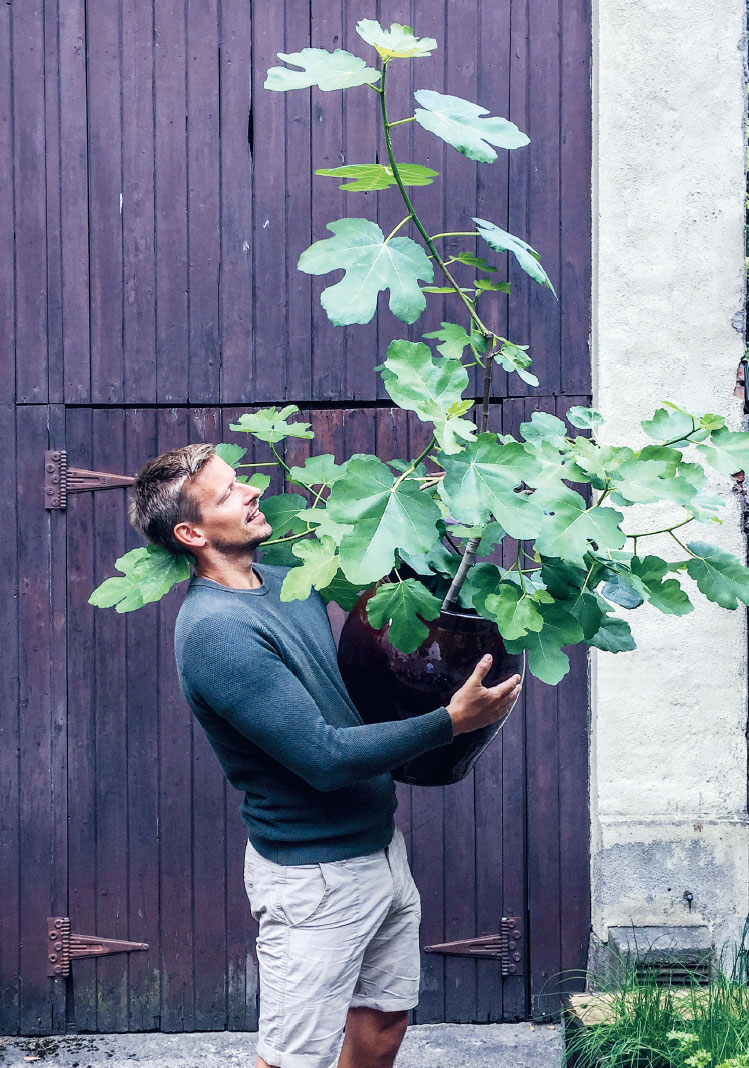 LIGHT
LIGHTThis is one of my absolute favourites! A delicate, airy and elegant plant that gives any home a lush, green look, the fig immediately gives a Mediterranean feel. The fig has huge historic and cultural significance, not least that it is thought to be the biblical tree of life. If your fig tree has the ideal conditions, you can even grow your own soft, green and purple figs. In my experience, having tried to grow the fruit for several years, I can confirm that it’s really difficult (in Norway) – except in record-breaking hot summers. But all is not lost – if you infuse fig leaves in cream you can use them to give your panna cotta a taste of fig. The fig tree is deciduous, so in the winter it will drop its leaves. Leave it to over-winter somewhere cool, but frost-free, with just a little light from a window. In spring, when new leaves appear, put the tree back in the living room or, as soon as the danger of frosts has passed, outdoors.
 LIGHT
LIGHT
Figs prefer a warm, sunny corner.
 WATERING
WATERING
A thirsty plant that requires quite a lot of water, the fig tree also needs good drainage to allow any surplus water to drain out. During winter, when the plant is dormant, reduce watering to once a month.
 SOIL
SOIL
Use a generously sized pot with ordinary potting compost and with a layer of leca balls in the bottom. Make sure the pot is big enough for a few growing seasons as fig trees aren’t so fond of being repotted.
 FEEDING
FEEDING
It needs very little plant food, but give it some liquid organic plant food a few times during the growing season.
 ORIGIN
ORIGIN
They are native to South-east Asia and the Mediterranean region.
 MISCELLANEOUS
MISCELLANEOUS
Fig trees sometimes give off a rank smell. Although some people will suspect the cat, the real culprit is the fig tree lurking in the corner. Note that the fig tree is toxic to pets.
